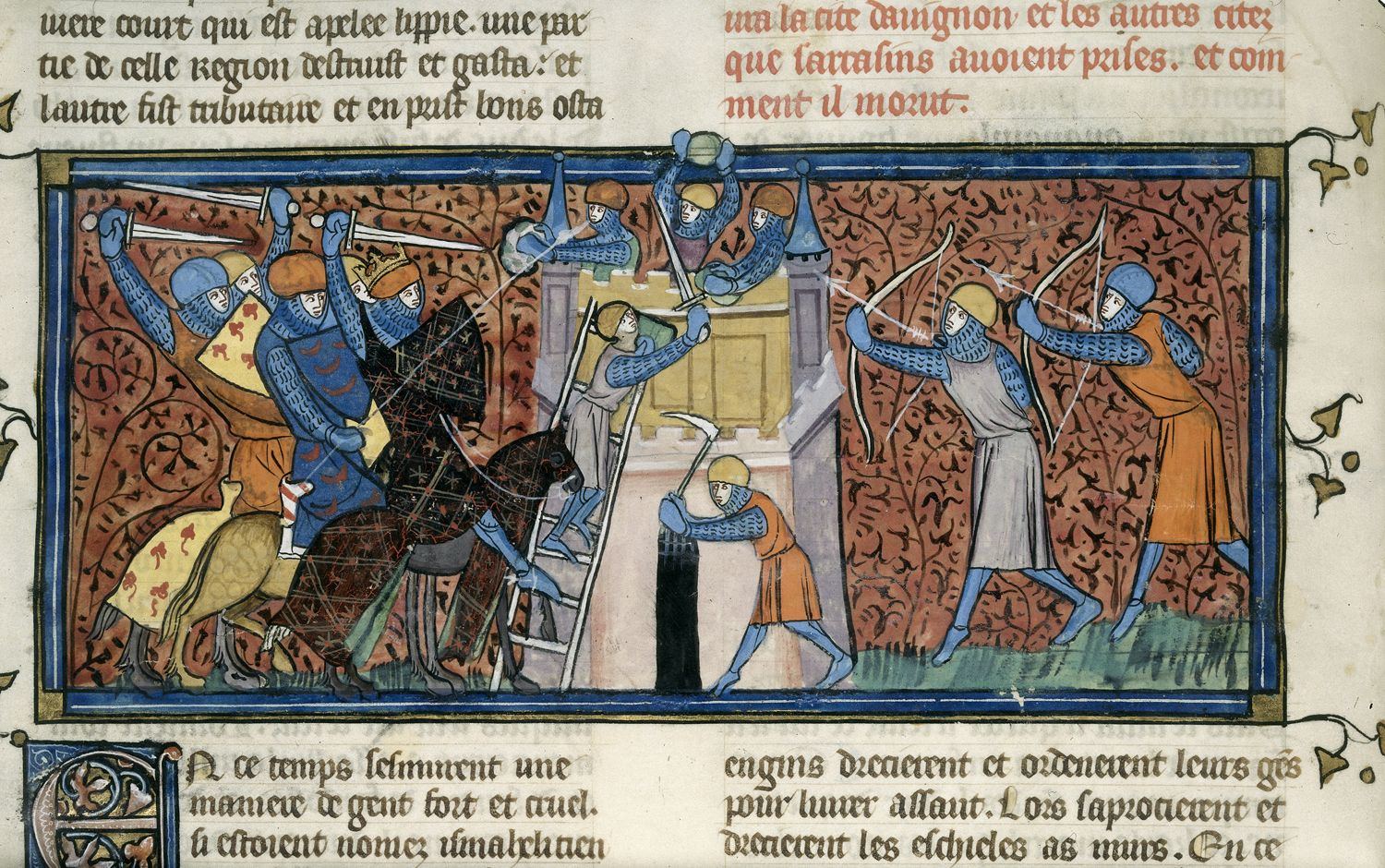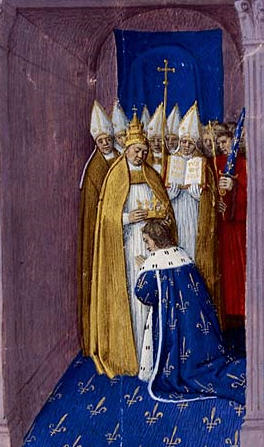|
Siege Of Nîmes
The siege of Nîmes took place shortly after the capture and destruction of Avignon in 737. Charles Martel failed to capture the Umayyad city of Narbonne but devastated most of the other principal settlements of Septimania, including Nîmes, Agde, Béziers and Maguelonne, which he viewed as potential strongholds of the Saracens. The city of Nîmes (Chronicle of Fredegar) and the Roman amphitheatre (turned into a fortress by the Visigoths) were destroyed under the orders of Charles Martel. The Arabs were temporarily contained to the city of Narbonne, though a second expedition was needed later that year to regain control of Provence after Arab forces returned. According to Paul the Deacon's ''Historia Langobardorum'' the Arabs retreated when they learned that Martel had formed an alliance with the Lombards.Fouracre, Paul (2000). ''The Age of Charles Martel''. Pearson Education. , p. 97. Martel's remaining years - he had only four to live - were spent setting up and strengthening ... [...More Info...] [...Related Items...] OR: [Wikipedia] [Google] [Baidu] |
Battle Of Avignon
The siege of Avignon was contested in 737. Frankish forces led by Charles Martel defeated the Umayyad garrison of Avignon and destroyed the stronghold. Contemporary view Arabs had occupied the city of Avignon in 734, after it had been surrendered to Yusuf ibn 'Abd al-Rahman al-Fihri, Umayyad governor of Narbonne, by Duke Maurontus of Provence. According to the '' Continuations of Fredegar'', Maurontus probably invited Yusuf into the city after forming an alliance with him against Martel. The '' Chronicle of Moissac'' confirms that Yusuf's forces moved peacefully from Arab-held Septimania into Provence and entered Avignon without a fight. In reaction, Martel sent his brother Duke Childebrand south in 736, accompanied by fellow dukes and counts. Childebrand laid siege to Avignon and held the field until his brother was ready to storm the city. Martel's forces used rope ladders and battering rams to attack the walls of Avignon, which was burned to the ground following its capture ... [...More Info...] [...Related Items...] OR: [Wikipedia] [Google] [Baidu] |
Paul The Deacon
Paul the Deacon ( 720s 13 April in 796, 797, 798, or 799 AD), also known as ''Paulus Diaconus'', ''Warnefridus'', ''Barnefridus'', or ''Winfridus'', and sometimes suffixed ''Cassinensis'' (''i.e.'' "of Monte Cassino"), was a Benedictine monk, scribe, and historian of the Lombards. Life An ancestor of Paulus's named Leupichis emigrated to Italy in 568 in the train of Alboin, King of the Lombards. There, he was granted lands at or near ''Forum Julii'' (Cividale del Friuli). During an invasion by the Pannonian Avars, Avars, Leupichis's five sons were carried away to Pannonia, but one of them, his namesake, returned to Italian peninsula, Italy and restored the ruined fortunes of his house. The grandson of the younger Leupichis was Warnefrid, who by his wife Theodelinda became the father of Paul. Paulus was his monastic name; he was born Winfrid, son of Warnefrid, about 720 in the Duchy of Friuli. [...More Info...] [...Related Items...] OR: [Wikipedia] [Google] [Baidu] |
8th Century In Francia
Eighth is ordinal form of the number 8, eight. Eighth may refer to: * One eighth, , a fraction (mathematics), fraction, one of eight equal parts of a whole * Eighth note (quaver), a musical note played for half the value of a quarter note (crotchet) * Octave, an interval between seventh and ninth * Eighth octave C, a C note * Eighth Lake, a lake by Inlet, New York See also * 1/8 (other) * 8 (other) * The 8th (other) * The Eighth Day (other) * {{disambiguation ... [...More Info...] [...Related Items...] OR: [Wikipedia] [Google] [Baidu] |
730s Conflicts
73 may refer to: * 73 (number) * One of the years 73 BC, AD 73, 1973, 2073 * ''73'' (magazine), a United States-based amateur radio magazine * 73 Best regards, a popular Morse code abbreviation * '' No. 73'', a British 1980s children's TV show *Nickname for the Boeing 737 airplane *73 Bristol Temple Meads–Bradley Stoke North, a bus route in England *73 Klytia 73 Klytia is a main-belt asteroid. It was the second and last asteroid discovery by the prolific comet discoverer Horace Tuttle, on April 7, 1862. It is named after Clytia, who loved Helios in Greek mythology. Of the first one hundred number ..., a main-belt asteroid See also * List of highways numbered 73 * {{Numberdis ... [...More Info...] [...Related Items...] OR: [Wikipedia] [Google] [Baidu] |
Sieges Involving The Umayyad Caliphate
A siege () . is a military blockade of a city, or fortress, with the intent of conquering by attrition, or by well-prepared assault. Siege warfare (also called siegecrafts or poliorcetics) is a form of constant, low-intensity conflict characterized by one party holding a strong, static, defensive position. Consequently, an opportunity for negotiation between combatants is common, as proximity and fluctuating advantage can encourage diplomacy. A siege occurs when an attacker encounters a city or fortress that cannot be easily taken by a quick assault, and which refuses to surrender. Sieges involve surrounding the target to block provision of supplies and reinforcement or escape of troops (a tactic known as "investment"). This is typically coupled with attempts to reduce the fortifications by means of siege engines, artillery bombardment, mining (also known as sapping), or the use of deception or treachery to bypass defenses. Failing a military outcome, sieges can often be deci ... [...More Info...] [...Related Items...] OR: [Wikipedia] [Google] [Baidu] |
Siege Of Narbonne (752–759)
The siege of Narbonne took place in France between 752 and 759, led by the Frankish king Pepin the Short against the Umayyad stronghold defended by an garrison of Arab and Berber Muslim troops who had invaded Septimania and occupied the Visigothic Kingdom and its Gallo-Roman inhabitants since 719. The siege remained as a key battlefield in the context of the Carolingian expedition south to Provence and Septimania starting in 752. The region of Septimania was up to that point in the hands of Andalusi military commanders and the local Visigothic and Gallo-Roman nobility, who had concluded different military and political arrangements to oppose the expanding Frankish realm. Umayyad rule collapsed by 750, and Umayyad territories in Europe were ruled autonomously by Yusuf ibn Abd al-Rahman al-Fihri and his supporters. Background The region of Septimania, in southern Gaul, was the last unconquered province of the Visigothic Kingdom. The incursion into Septimania was motivated by the ... [...More Info...] [...Related Items...] OR: [Wikipedia] [Google] [Baidu] |
Pepin The Short
the Short (; ; ; – 24 September 768), was King of the Franks from 751 until his death in 768. He was the first Carolingian dynasty, Carolingian to become king. Pepin was the son of the Frankish prince Charles Martel and his wife Rotrude of Hesbaye, Rotrude. Pepin's upbringing was distinguished by the ecclesiastical education he had received from the Christian monasticism, Christian monks of the Basilica of Saint-Denis, Abbey Church of St. Denis, near Paris. Succeeding his father as the Mayor of the Palace in 741, Pepin reigned over Francia jointly with his elder brother, Carloman (mayor of the palace), Carloman. Pepin ruled in Neustria, Burgundy, and Provence, while his older brother Carloman established himself in Austrasia, Alemannia, and Thuringia. The brothers were active in suppressing revolts led by the Bavarians, Aquitanians, Saxons, and the Alemanni in the early years of their reign. In 743, they ended the by choosing Childeric III, who was to be the last Merovingian ... [...More Info...] [...Related Items...] OR: [Wikipedia] [Google] [Baidu] |
Dark Ages (historiography)
The ''Dark Ages'' is a term for the Early Middle Ages (–10th centuries), or occasionally the entire Middle Ages (–15th centuries), in Western Europe after the fall of the Western Roman Empire, which characterises it as marked by economic, intellectual, and cultural decline. The concept of a "Dark Age" as a historiographical periodization originated in the 1330s with the Italian scholar Petrarch, who regarded the post-Roman centuries as "dark" compared to the "light" of classical antiquity.. Reprinted from: The term employs traditional black-and-white dualism, light-versus-darkness imagery to contrast the era's supposed ''darkness'' (ignorance and error) with earlier and later periods of ''light'' (knowledge and understanding). The phrase ''Dark Age(s)'' itself derives from the Latin ''saeculum obscurum'', originally applied by Caesar Baronius in 1602 when he referred to a tumultuous period in the 10th and 11th centuries. The concept thus came to characterize the entire Middle ... [...More Info...] [...Related Items...] OR: [Wikipedia] [Google] [Baidu] |
Carolingian Empire
The Carolingian Empire (800–887) was a Franks, Frankish-dominated empire in Western and Central Europe during the Early Middle Ages. It was ruled by the Carolingian dynasty, which had ruled as List of Frankish kings, kings of the Franks since 751 and as kings of the Lombards in Italy from 774. In 800, Pope Leo III crowned the Frankish king Charlemagne as Roman emperor in return for political protection, disregarding the universalist claims of the weakened Byzantine Empire. The Carolingian Empire is sometimes considered the first phase in the history of the Holy Roman Empire. After a Carolingian civil war, civil war from 840 to 843 following the death of Emperor Louis the Pious, the empire was divided into autonomous kingdoms, with one king still recognised as emperor, but with little authority outside his own kingdom. The unity of the empire and the hereditary right of the Carolingians continued to be acknowledged. In 884, Charles the Fat reunited all the Carolingian kingdoms f ... [...More Info...] [...Related Items...] OR: [Wikipedia] [Google] [Baidu] |
Lombards
The Lombards () or Longobards () were a Germanic peoples, Germanic people who conquered most of the Italian Peninsula between 568 and 774. The medieval Lombard historian Paul the Deacon wrote in the ''History of the Lombards'' (written between 787 and 796) that the Lombards descended from a small tribe called the Winnili,: "From Proto-Germanic language, Proto-Germanic ''wikt:Reconstruction:Proto-Germanic/winnaną, winna-'', meaning "to fight, win" who dwelt in northern Germany before migrating to seek new lands. Earlier Roman-era historians wrote of the Lombards in the first century AD as being one of the Suebian peoples, also from what is now northern Germany, near the Elbe river. They migrated south, and by the end of the fifth century, the Lombards had moved into the area roughly coinciding with modern Austria and Slovakia north of the Danube. Here they subdued the Heruls and later fought frequent wars with the Gepids. The Lombard king Audoin defeated the Gepid leader Thuris ... [...More Info...] [...Related Items...] OR: [Wikipedia] [Google] [Baidu] |
Historia Langobardorum
The ''History of the Lombards'' or the ''History of the Langobards'' () is the chief work by Paul the Deacon, written in the late 8th century. This incomplete history in six books was written after 787 and at any rate no later than 796, maybe at Montecassino. The history covers the story of the Lombards from their mythical origins to the death of King Liutprand of Lombardy, Liutprand in 743, and contains much information about the Eastern Roman empire, the Franks, and others. The story is told from the point of view of a Lombard patriot and is especially valuable for its treatment of the relations between the Franks and the Lombards. As his primary sources, Paul used the document called the ''Origo gentis Langobardorum'', the ''Liber pontificalis'', the lost history of Secundus of Non, Secundus of Trent, and the lost annals of Benevento; he also made free use of works by Bede, Gregory of Tours, and Isidore of Seville. Editions According to a study made by Laura Pani in 2000, the ... [...More Info...] [...Related Items...] OR: [Wikipedia] [Google] [Baidu] |




